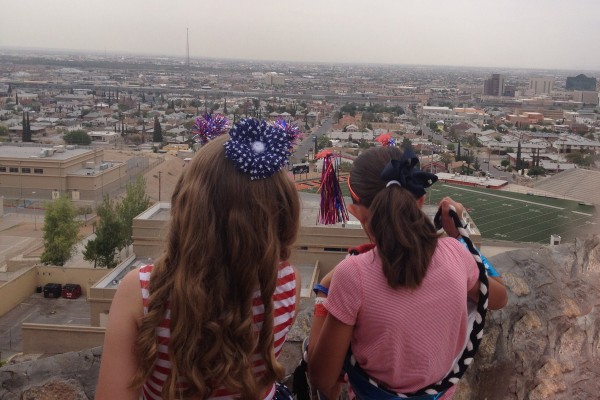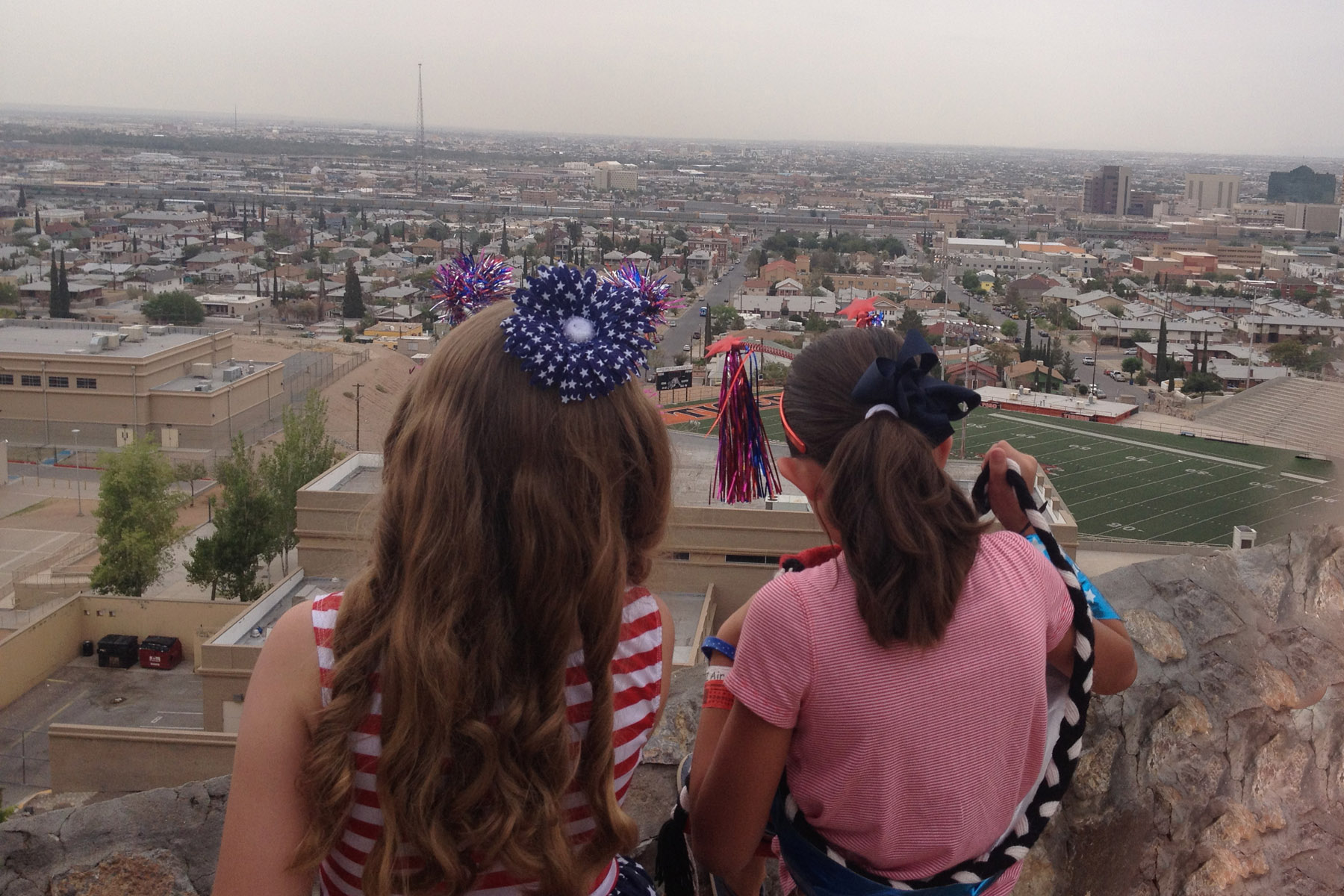It’s a sweltering summer Sunday night in El Paso, Texas, at the city’s new downtown baseball stadium, where the local Triple-A team, the Chihuahuas, is leading the visiting Tacoma Rainiers at the seventh-inning stretch.
As the hammerlock of the day’s 102-degree heat begins to release its grip on this high-desert town, a sellout crowd of 8,607 fans rises to its feet to sing and sway along to “Take Me Out to the Ball Game.’’ Immediately after, trumpet-charged mariachi music blasts over the sound system and the crowd roars with glee as Chico the Chihuahuas’ mascot dances onto the field, wagging his tail and making the team’s signature “Fear the Ears’’ gesture with his paws.
Ah, béisbol – still America’s pastime in a new America.
And if there is a city that characterizes our new America, it’s the very old town of El Paso, circa 1659. I spent a week there this summer studying at the University of Texas at El Paso and its Dow Jones Multimedia Training Academy. As I left campus to visit taco joints and burger stands, coffee shops and watering holes, I met dozens of the 674,433 residents who call El Paso home. I walked the border fence between the United States and Mexico and crossed over into neighboring Ciudad Juárez, El Paso’s larger sister city of 1.5 million people.

Two young girls dressed up to celebrate the Fourth of July take in the scenic view of El Paso, Texas, and Juarez, Mexico, from Tom Lea Park on Rim Road. Photo credit: Kate Gannon
What was most noticeable to me in this historically rich city was what I didn’t see: The little daily antagonisms over immigration that I routinely witness back home in Orlando. Here I was in a city profoundly shaped and impacted by immigration – legal and illegal – on a daily basis. Yet I spotted not one “Welcome to America. Now Speak English!” bumper sticker on a car driving down Mesa Avenue, like I see all the time on my commute on State Road 417. No angry letters in the El Paso Times, the city’s leading newspaper, calling for mass deportations and a bigger fence. No customers standing in line at Lowe’s harrumphing about signs in Spanish.
And this summer, as the Southwest, including El Paso, was slammed with what President Obama called a “humanitarian crisis’’ of up to 90,000 unaccompanied immigrant children from Central America fleeing drug wars and gang violence – still the Sun City took it in stride. No banging on buses by protesters shouting “Illegals Go Home!’’ as in other cities in Arizona and California. In June, as El Paso faced a sudden influx of 2,000 mostly women and children from Central America, city leaders worked with local Catholic churches to provide water, food, clothing and bus fare to return them home or resettle them elsewhere in the states with family members until their status could be reviewed and determined by judges.
So, what’s up with El Paso?
“This community was already helping children before we had this humanitarian influx of immigrants,’’ says city councilwoman Lily Limón, an El Paso native and retired educator who represents the city’s southeast side. “The community has been very responsive … In El Paso we have always lived and co-existed in a peaceful manner. It’s taken a while but this is a community that lives at peace with our diversity. Whether it’s the Filipino community or the African-American community, or the Korean community or the Lebanese community – this is a tapestry of cultures. So it’s not like other areas that are not as diverse that have had those kinds of problems.’’
Indeed, immigration in El Paso, which is 81 percent Hispanic, is as natural as the sunrise. Each morning as the first orange-pink rays of the desert sun dart across the El Paso-Juárez metroplex, thousands of motorists and pedestrians cross one of the city’s three international bridges between the United States and Mexico to go to work, to school or to visit family. The idea of building an impregnable wall at the Rio Grande – the immigration “reform’’ constantly pushed on national TV and radio talking-head shows – is laughable to most El Pasoans, whether they are Latinos or Anglos.
“People who don’t live on the border often don’t understand the complexity of border life,’’ says Robert Moore, editor of the El Paso Times. “Millions of jobs across the country are tied to international commerce moving across the U.S.-Mexico border. It would be economically disastrous to create the sort of sealed border you often hear discussed. As a country, we need to promote efficient movement of legitimate commerce – both people and goods – while making illegitimate commerce more difficult.
“The move to build physical barriers is sad and shortsighted, particularly in urban areas like El Paso. These sorts of structures belong in war zones. Despite the rhetoric, we are not facing an invasion from Mexico. We are, for the most part, seeing an influx of people trying to make a better life for themselves and their families. Most have no intention of permanently moving to the United States. Truly tackling the underlying issues requires much more than building a fence. It requires sensible immigration policies and working with other countries to improve conditions to reduce the impetus for immigration. Those things are hard, but effective. Building a wall is easy, but ineffective.’’
So what does immigration reform look like that is consistent with American laws and values?
As Moore and Limón point out, it means grappling with misery and violence that is so horrific that a mother in Honduras would risk rape, robbery and murder in the desert just to bring herself and her children to the United States. And that’s a tougher sell in a debt-ridden country that is growing ever isolationist and fatigued with the world’s problems at just the moment the world is becoming a lot smaller.
“You always have to get to the source,’’ says Limón. “Drug wars, extreme poverty – those are things we need to look to provide solutions for. And the U.S. doesn’t necessarily need to be the one that goes in and cleans it up. Countries need to come together. Wouldn’t it be wonderful if there were a summit and you had the leadership of Mexico, the United States and Central America – people with a heart to sit down and meet and say we have a problem. This is a world crisis taking place in our backyard.
“Our Statue of Liberty says ‘Give me your tired, your poor.’ There was a time when we were more welcoming and compassionate. We have to realize that this is not an El Paso problem. It’s not a United States problem. It’s not a Mexican problem. It’s our problem. We need leadership. Children are dying falling off the top of train cars in the desert trying to get here. The number of children crossing from  Mexico has come as a result of the violence – especially in Juárez two or three years ago. Families are in fear for the lives of their children – and know that at least they would be safer in a detention facility here than where they’re at. Imagine as a parent having to make those decisions. It’s heartbreaking.’’
Mexico has come as a result of the violence – especially in Juárez two or three years ago. Families are in fear for the lives of their children – and know that at least they would be safer in a detention facility here than where they’re at. Imagine as a parent having to make those decisions. It’s heartbreaking.’’
Building a bigger fence may play well around the cable-TV studio desks where pundits gather to yak in faraway New York and Washington. But down in El Paso, it’s a foreign concept.
Rick Brunson is an associate instructor of journalism in UCF’s Nicholson School of Communication. He can be reached at richard.brunson@ucf.edu. This article was originally published on UCFToday.



If only there were more people with your common sense in Arizona. I guess that’s what the people who leave this city to go somewhere else, miss about El Paso. El Pasoans live their normal lives without worrying so much about racism and discrimination. I don’t understand how so many people elsewhere can be such haters in their everyday life. Good report Rick!
One helluva good piece of researching and putting it all together, Mr. Brunson! Thank you for your insight and time in writing this.
Far too many people, weighed by gloom’s cynical illusions, do nothing much more than complain, complain, complain daily. It’s their only internal marching order — sadly, from the time they awaken in the mornings to the churning, burning moment they lose consciousness to sleep at night. Self-consumption by one’s own hate, it seems.
This story, in stark realism, offers a wonderful contrast to counter that way of thinking.
Once again, thank you!
Dan Bodine